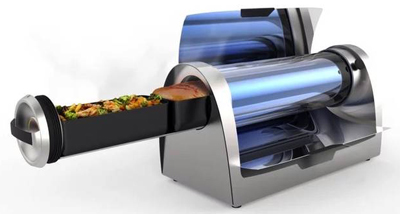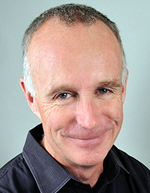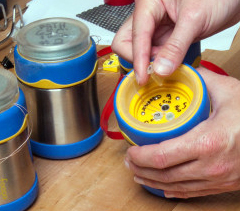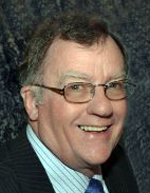 The Phase Change Matters e-mail newsletter is a weekly summary of the latest news and research on phase change materials and thermal energy storage. To subscribe, visit www.puretemp.com/subscribe. For more frequent updates, follow @puretemp on Twitter or visit the Phase Change Matters blog, www.puretemp.com/pcmatters.
The Phase Change Matters e-mail newsletter is a weekly summary of the latest news and research on phase change materials and thermal energy storage. To subscribe, visit www.puretemp.com/subscribe. For more frequent updates, follow @puretemp on Twitter or visit the Phase Change Matters blog, www.puretemp.com/pcmatters.
THERMAL ENERGY STORAGE
AIA honors New School’s University Center, Federal Center South
 The New School’s University Center, a 370,000-square-foot mixed-use building in Manhattan, has made the American Institute of Architects‘ list of the Top 10 Most Sustainable Projects of 2015. The LEED Gold building, right, features a thermal energy storage system that makes ice at night, when electricity is cheaper, to help cool the structure during the day. University Center was designed by Skidmore, Owings & Merrill.
The New School’s University Center, a 370,000-square-foot mixed-use building in Manhattan, has made the American Institute of Architects‘ list of the Top 10 Most Sustainable Projects of 2015. The LEED Gold building, right, features a thermal energy storage system that makes ice at night, when electricity is cheaper, to help cool the structure during the day. University Center was designed by Skidmore, Owings & Merrill.
Federal Center South, a U.S. Army Corps of Engineers office building in Seattle, was honored as the AIA’s Top 10 Plus winner. The building’s HVAC system includes heat-recovery chillers that extract heat from a thermal storage tank to warm the building in the morning, when demand is high. A rooftop tank is filled with 2-foot-long panels containing phase change material that freezes and thaws at 55 degrees, serving as a battery for storing thermal energy. Federal Center South was designed by ZGF Architects.
Axiom Exergy’s ‘Refrigeration Battery’ set for supermarket trial
California startup Axiom Exergy says its “Refrigeration Battery” is ready for its first supermarket trial. The system stores water chilled at night, when electricity is cheapest, to take the load off condensers and compressors during the day. The system also provides backup refrigeration during power outages. Greentech Media’s Jeff St. John reports that the company plans to begin scaling up to commercial production later this year.
PRODUCT NEWS

GoSun’s new solar cooker ‘a big step forward’
Lloyd Alter, Treehugger’s managing editor, described GoSun‘s original solar-powered cooker as “absolutely brilliant.” But the small size of its glass vacuum tube limited a foodie’s options. The new design features 5-inch-diameter tube that can cook a meal for eight people. A thermal battery – an aluminum case filled with paraffin-based phase change material – stores the sun’s energy for use near mealtime.
“GoSun has worked hard to turn an idea that did have limitations into one that can be used for almost any kind of cooking,” Alter writes. “It is a sort of steaming, so you won’t be doing conventional barbecued burgers and steaks, but hey, we eat too much of that stuff anyway. You can still bake, roast, steam and boil and that’s a lot healthier than grilling. This is a big step forward in the world of solar cooking.”
Ergodyne introduces 3 redesigned cooling vests
Ergodyne of St. Paul, Minn., has launched three redesigned cooling vests featuring phase change material. The maker of workplace gear says flexible honeycomb cooling packs and a shorter, wider vest design give wearers increased comfort and mobility. Ergodyne says the cooling material is a “non-toxic, non carcinogenic substance.” Product safety data sheets identify the PCM as a paraffin.
COMPANY NEWS
CEO says Ice Energy sales grew more than 1,000% in 2014
 Ice Energy CEO Mike Hopkins spoke with AltEnergyMag.com about his company’s contracts with Southern California Edison and Riverside Public Utilities and the future of behind-the-meter, ice-based energy storage.
Ice Energy CEO Mike Hopkins spoke with AltEnergyMag.com about his company’s contracts with Southern California Edison and Riverside Public Utilities and the future of behind-the-meter, ice-based energy storage.
“The energy storage space is projected by alternative energy experts to reach multibillion dollar levels over the next decade,” Hopkins said. “Ice Energy’s sales alone grew more than 1000% in 2014. With renewable energy supplying an increasing (and intermittent) share of the power grid, storage is gaining traction and is poised for tremendous growth.”
MARKET RESEARCH
18.7% annual growth projected for thermal energy storage through 2019
The global market for thermal energy storage is expected to top $1.3 billion in revenue by 2019, according to the latest report from Technavio. That’s a compound annual growth rate of 18.7 percent. TES systems are used to heat and cool buildings and to generate power. Leading companies in the market include Baltimore Aircoil, Caldwell Energy, Chicago Bridge & Iron and CALMAC.
Technavio attributes the projected growth to increasing demand for uninterrupted power supply.
“The decentralization of power generation using various renewable energy resources can curb many grid failures and help in developing green solutions,” says Faisal Ghaus, Technavio vice president.
MEDICAL
 Inside PATH’s self-heating diagnostic device
Inside PATH’s self-heating diagnostic device
The Seattle-based nonprofit PATH has posted photos of the prototype for its electricity-free, self-heating diagnostic device. It’s known as NINA, or Non-Instrumented Nucleic Acid Amplification. NINA uses an exothermic chemical reaction and phase change material to help accurately diagnose an array of infectious diseases in remote settings where electricity is not available.
SOLAR
The case for investing in concentrated solar power
CSP Today‘s latest Expert Column addresses the question: Is CSP an expensive or viable investment?
Simon Stevens, legal counsel at the Middle East Solar Industry Association, and Kevin Smith, CEO of SolarReserve, outline the challenges and opportunities associated with concentrated solar power. A key factor for both is the development of cost-effective energy storage:
“The importance in the long run of solar becoming a dispatchable power producer shouldn’t be underestimated,” Stevens writes. “PV may be viewed as being a lower cost, relatively simple and proven technology right now, but that all tends to become a lot less clear cut once the question of storage is brought into the discussion.”
“The pace of implementation and cost reductions for PV has been dramatic, but the energy storage issue has not been resolved and will increasingly challenge electrical distribution systems,” Smith writes. “With increased CSP implementation, I anticipate similar efficiency and cost improvements for CSP, but a cost-effective storage solution with CSP has already been achieved.”
RESEARCH ROUNDUP
For our full list of recent academic research, see puretemp.com/academic. Here are highlights from the past week:
From Applied Energy:• Polyols as phase change materials for surplus thermal energy storage
• Numerical simulation study on discharging process of the direct-contact phase change energy storage system
• Comparison of control systems for the optimisation of ice storage in a dynamic real time electricity pricing environment
• Development of structural–functional integrated concrete with macro-encapsulated PCM for thermal energy storage
From Chemical Engineering Journal:
• Preparation of paraffin/expanded vermiculite with enhanced thermal conductivity by implanting network carbon in vermiculite layers
From Energy and Buildings:
• Heating Performance of a Solar Chimney Combined PCM: A Numerical Case Study
From Energy:
• Heat transfer characteristics of thermal energy storage for PCM (phase change material) melting in horizontal tube: Numerical and experimental investigations
From Renewable and Sustainable Energy Reviews:
• Review of solid–liquid phase change materials and their encapsulation technologies
PATENT APPLICATION
Evaporator with phase change material
U.S. patent application 20150107295 (assignee Delphi Technologies): “An evaporator configured to transfer heat between air flowing through the evaporator and refrigerant within the evaporator, and transfer heat between the refrigerant within the evaporator and phase change material (PCM) within the evaporator.”
NETWORKING
Connect with PCM experts and industry leaders on LinkedIn
More than 140 of your colleagues have joined a new LinkedIn group devoted to the discussion of phase change material and thermal energy storage. The Phase Change Matters group is intended to be a highly interactive complement to the blog and newsletter of the same name.
 You are invited to join the group and connect with PCM and TES experts from around the world. Ian Biggin, director at Phase Energy Ltd., weighed in this week on life cycle assessments of PCMs and the use of PCMs in thermal energy storage:
You are invited to join the group and connect with PCM and TES experts from around the world. Ian Biggin, director at Phase Energy Ltd., weighed in this week on life cycle assessments of PCMs and the use of PCMs in thermal energy storage:
“[Regarding the] LCA query – On one of the slides we give to UK architects and engineers (on behalf of BASF), we give a figure of 1.8 kg CO2/kg microencapsulated PCM. This relates specifically to BASF’s Micronal PCMs but it may give you an idea of the CO2 emissions involved in production etc.
“On David’s point above, you can certainly reduce the size of TES water tanks considerably by the correct use of PCMs. Obviously, much depends on the delta T as to whether PCMs or water is the best choice and correct heat exchanger design is critical. Get that wrong and you don’t use all the PCM in the tank.”
YOUR TURN
Got a question about PCMs or TES? Ask our experts
Two Entropy Solutions advisors, Dr. Mohammed Farid of the University of Auckland and Lucas B. Hyman of Goss Engineering, are ready to answer your questions about phase change material and thermal energy storage. We’ll select the best questions sent to inquiries@entropysolutionsinc.com and post the answers here each Friday.